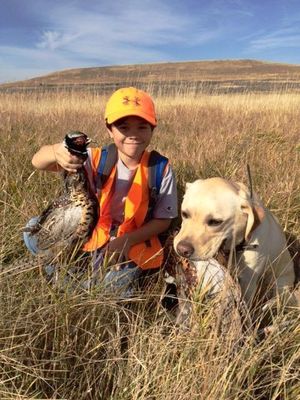Last shot at Eastern Washington pheasant release sites
HUNTING -- A few birds may still be hanging on at hunting sites for the Eastern Washington Pheasant Enhancement and Release Program.
The final release of farm-raised rooster pheasants was made a last week, just before Thanksgiving at sites near Fishtrap Lake, Sherman Creek Wildlife Area, Snake River and 20 other areas in the region.
Despite the non-toxic shot requirement enacted in 2011, these release public land sites have continued to be popular since the program began in the late 1990s. It's especially popular with hunters who don’t have access to hunt private land.
The first releases of the year occurred at all sites before the Sept. 21-22 youth upland bird season. Two additional releases were scheduled at the sites during the general pheasant season.
Only about half the sites were stocked with birds for the Oct. 19 opener, said Joey McCanna, Washington Department of Fish and Wildlife biologist. The other sites were stocked the following week, he said.
The agency does not divulge which sites will be stocked when.
This bit of chance and inconvenience dates back to the bad experiences agency staff had years ago when hunters often waited at designated sites for the game farm trucks to show up. In some cases, greedy hunters created dangerous situations, sometimes even blasting away as the birds were being released.
Times have changed in other ways since the early years of the Eastern Washington Pheasant Enhancement Program, when the Washington Legislature required 80 percent of the funding to be spent on releasing birds while the rest was earmarked for pheasant habitat efforts.
In 2008, about $270,000 was spent to release birds on the East Side and about $32,000 went to habitat.
That year, with legislative approval, Washington Fish and Wildlife managers approved a phased-in schedule to reduce the number of birds planted until the spending equaled about 50 percent for birds and 50 percent for habitat.
“We’re right about there this year,” McCanna said, noting that 11,350 rooster pheasants were released at the sites this year. That’s down from 11,820 last year and down from more than 20,000 birds in the initial years.
Hunter groups have supported the department’s emphasis on working with farmers to enhance habitat for wild pheasants. Methods include developing plantings that improve pheasant productivity on lands seeded into the federal Conservation Reserve Program.

